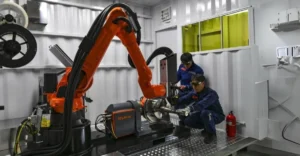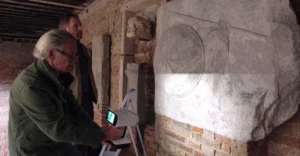The groundbreaking space-printed component represents a pivotal advancement in orbital manufacturing capabilities.
The first-ever metal component 3D printed in orbit has made its historic return to Earth for comprehensive testing, marking an industry first that could revolutionize how we approach manufacturing for space exploration. The component—a specialized titanium bracket designed for satellite repair—was manufactured aboard the International Space Station using a modified selective laser melting process specifically adapted for microgravity environments. At the time of the project’s announcement last year, experts had already hailed it as a potential game-changer for space operations. Now we can see the fruits of this work, as NASA has revealed the details of the returned part—and there is much to be said about this pioneering achievement.
The $18 million project is a co-creation by NASA and Orbital Fabrication Systems, which specializes in developing manufacturing technologies for extreme environments. As mentioned, the component is one of just three experimental parts manufactured during this initial test phase, and each has distinct properties influenced by the unique conditions of space, from specialized microstructural formations to enhanced material properties unachievable in Earth’s gravity.
In the case of this particular bracket, the aerospace team opted to include functional features made from a titanium-aluminum-vanadium alloy. These precision components include internal lattice structures, cooling channels, and integrated mounting points—all 3D printed in a single process—marking a first in the space manufacturing world. Totalling 185 grams of specialized titanium alloy, these parts were all 3D printed in collaboration with Orbital Fabrication Systems, a Houston-based specialist in advanced manufacturing for the aerospace and defense sectors.
Orbital Fabrication Systems is a leader in the 3D printing of aerospace-grade metals, leveraging its proprietary Zero-G Printing process for this mission, as well as operating a research division that is pioneering direct AM production of critical components for space applications. NASA specifies that the titanium alloy featured in this groundbreaking component is made from 100% space-certified materials, which were processed into a fine powder for AM processing in orbit.
































